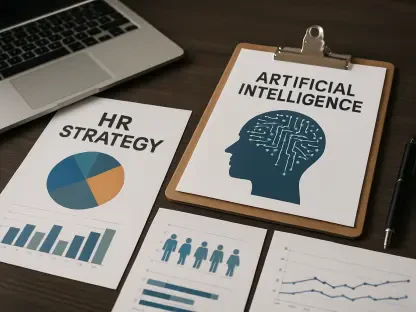Artificial Intelligence (AI) is at the forefront of technological advancement, shaping industries and redefining jobs. However, despite its transformative potential, AI has not been immune to deep-rooted gender disparities that pervade other sectors. According to Randstad’s AI & Equity and Workmonitor reports, a significant gender gap exists in AI upskilling and employment. The data reveals that 71% of workers skilled in AI are men, leaving a considerable discrepancy with only 29% being women. This 42% gender gap underscores the need for urgent intervention to ensure equal opportunities for all.
Disparities in AI Upskilling and Training
Statistics Highlight Gender Inequality
The disparity in AI upskilling opportunities is alarming. Women are substantially less likely to be offered the chance to upskill in AI technologies and often feel inadequately prepared through the training they receive. This discrepancy is not merely a reflection of skill gaps but speaks to systemic biases in how training opportunities are distributed and perceived. When training is provided, women frequently report feeling less supported and prepared compared to their male counterparts. This inequity in training fosters an environment where women are continuously at a disadvantage.
The Impact on Career Advancement
Such gaps in training and preparation inevitably affect career advancement for women in AI fields. For instance, lacking sufficient upskilling opportunities means fewer women occupy senior roles or positions that influence decision-making within organizations. This absence of female voices at higher levels contributes to a cycle where women are underrepresented in AI-related jobs, further perpetuating the gender gap. Consequently, addressing upskilling imbalances is critical to ensuring that women are not just participating in AI but thriving and leading in these roles.
Pay Equity and Workplace Conditions
The Disparate Landscape of Salaries
Pay inequity remains a substantial hurdle for women in AI professions. Unlike their male counterparts, women are less likely to request salary raises or campaign for improved working conditions. The Randstad report found that 67% of women believe they are not paid fairly, which aligns with broader industry trends where men are more assertive in salary negotiations. This timid approach in salary discussions can be attributed to both a lack of confidence and fear of backlash, further emphasizing the need for supportive and transparent workplaces.
Salary Transparency as a Solution
One potential remedy to address the pay gap is greater salary transparency. The same report indicated that when salary information is readily available, the difference in salary expectations between men and women diminishes significantly. Providing clear and accessible salary data empowers all employees to negotiate their pay more effectively and equitably. Transparency promotes fair compensation practices, providing women with the leverage needed to demand raises or equitable pay, thus gradually closing the gender pay gap.
Trends Among Younger Workers
Changing the Narrative for the New Workforce
Encouragingly, the report reflects a promising trend among younger workers. Women newly entering the workforce are contributing more significantly to the AI talent pool compared to their older counterparts. While older generations of women with approximately 30 years of work experience make up only 21% of AI talent, younger women entering the field account for a more substantial 34%. This shift suggests that efforts to encourage women in STEM fields are beginning to bear fruit, potentially signaling a turning point in the gender representation of AI.
Catalyzing Change Through Education
Education remains a critical factor in this positive trend. As educational institutions refine their curriculum and teaching methods to be more inclusive and encouraging towards women pursuing AI, the entry rate of women into these roles has improved. However, more needs to be done to sustain this momentum. Continued support through mentorship, accessible higher education programs, and active collaboration with industry leaders can maintain this positive trajectory, ensuring that the contributions of women in AI continue to rise.
Recommendations for Bridging the Gap
Rethinking Learning and Development Approaches
Traditional Learning & Development (L&D) approaches need to be rethought to address factors that intimidate women from upskilling in AI. Intimidation can stem from a lack of representation, perceptions of AI as a male-dominated field, or simply a lack of initial support. By providing expedited skilling opportunities designed to be inclusive and supportive, organizations can help women advance without the barriers they currently face. Creating a more inviting learning environment is essential for fostering equality in professional development.
Empowering Talent and Minimizing Bias
Ensuring diverse representation in AI is crucial for fostering innovation and creating technology that reflects the needs and perspectives of all of society. Addressing these disparities not only promotes fairness but also strengthens the overall effectiveness and inclusivity of AI advancements.









